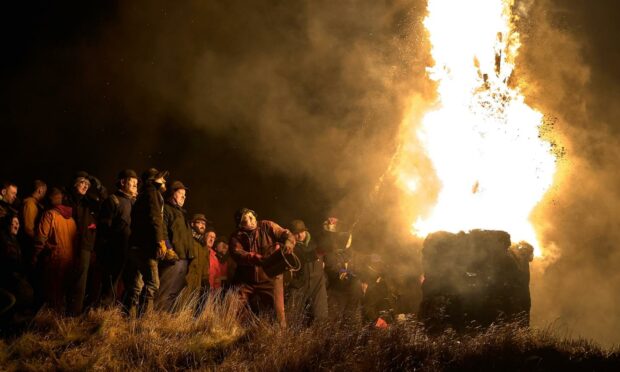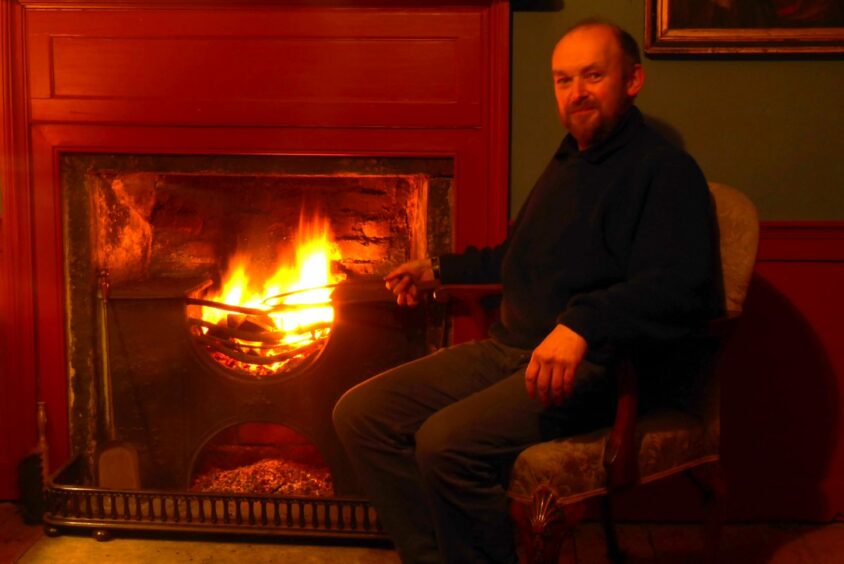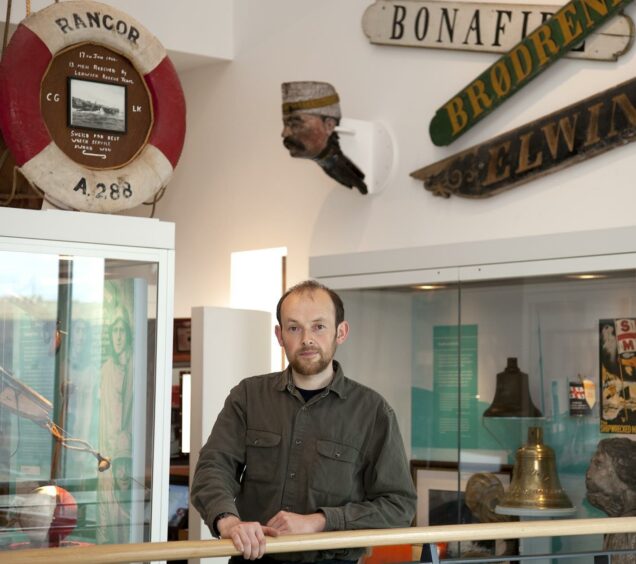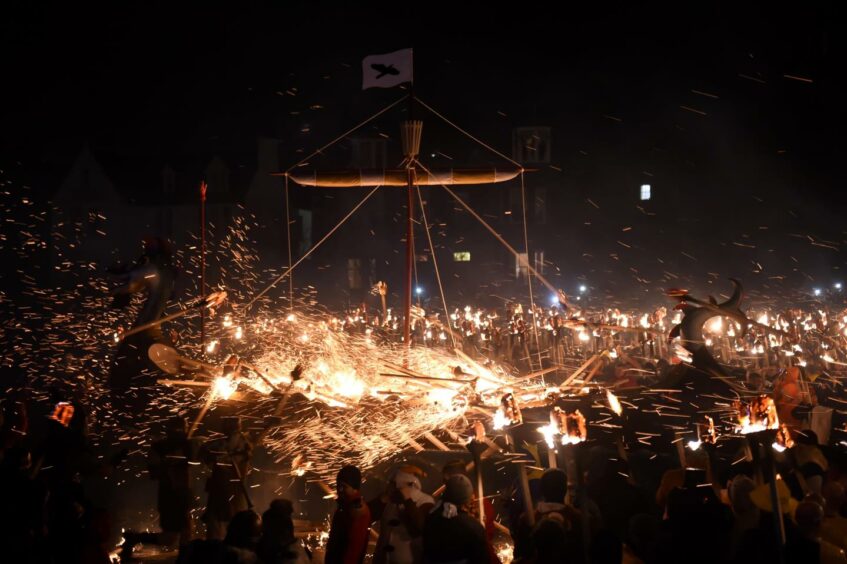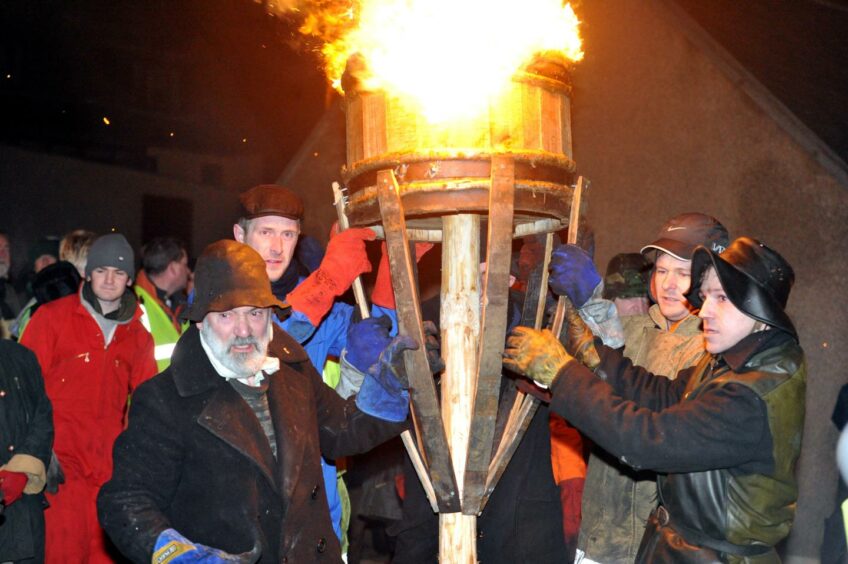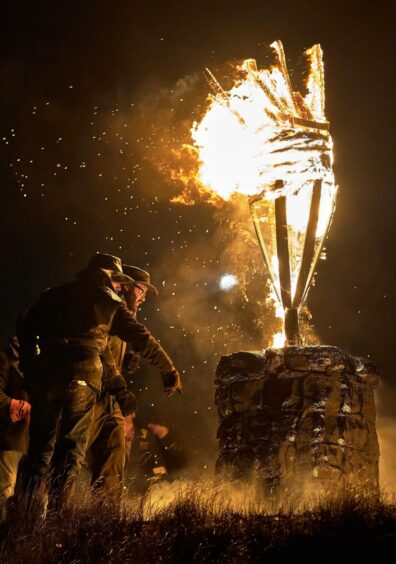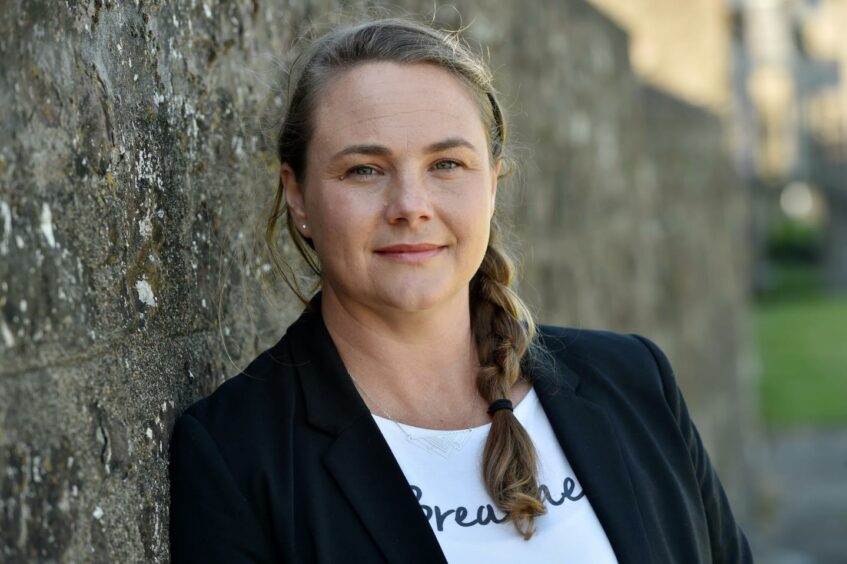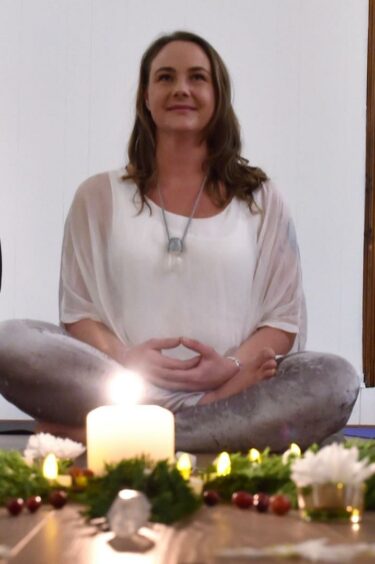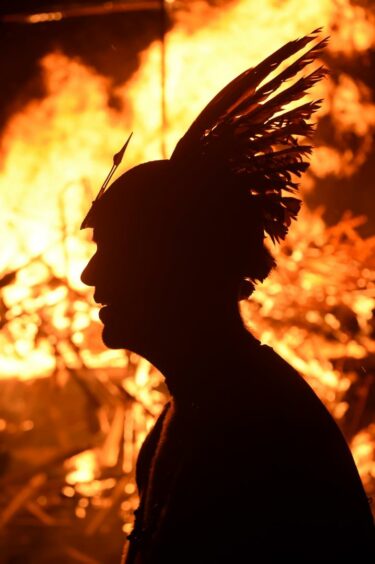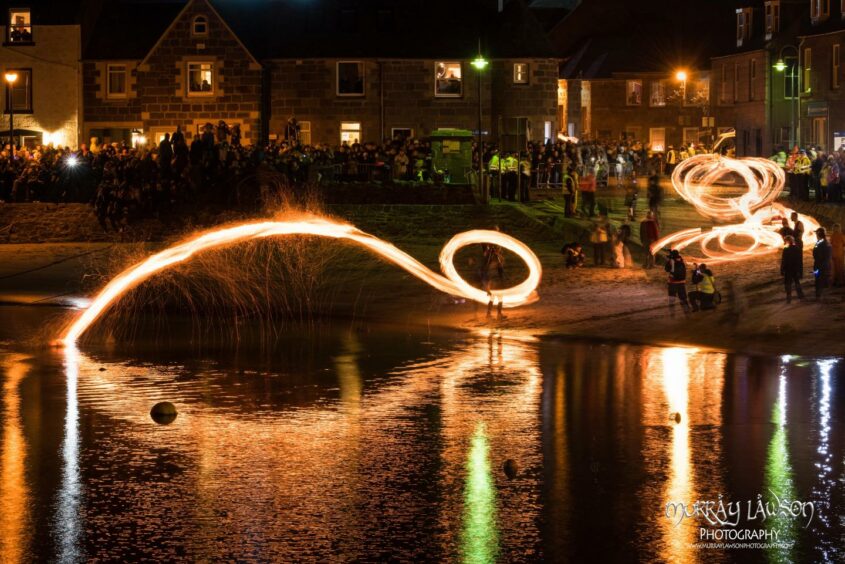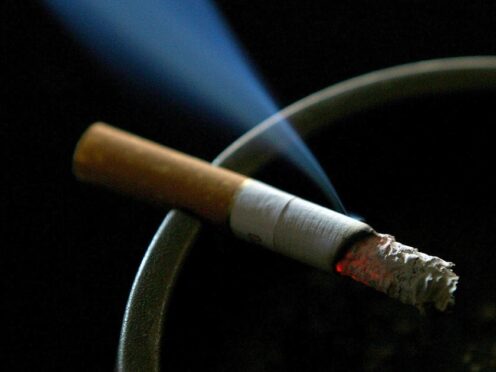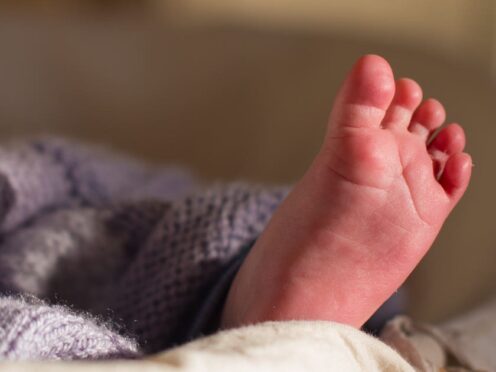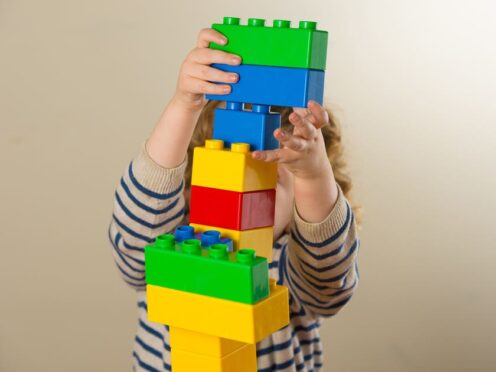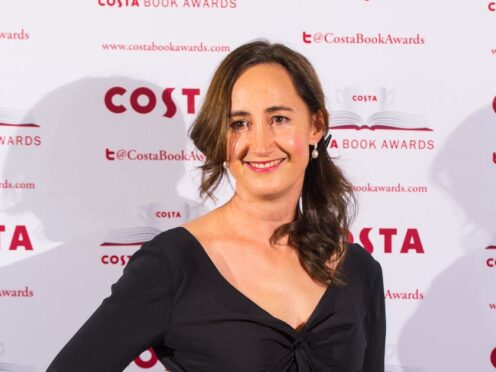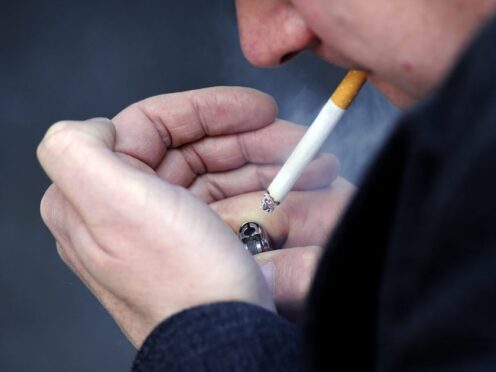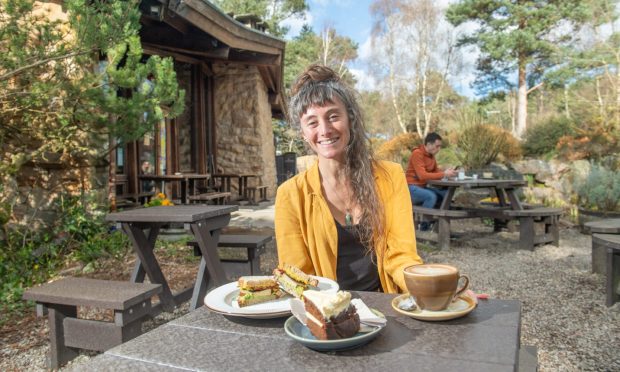Fire has long played a part in Scotland’s traditions, especially at the turn of the year, and with several festivals cancelled, including Stonehaven’s Fireballs and Lerwick’s Up-Helly-Aa, we look beyond the events to explore the link between fire and New Year from a cultural, spiritual and economic perspective.
Fire has the power to delight and inspire us, offering protection and even healing, as four experts in their field explained as we prepare to usher in a new year.
Dr Ian Tait, Curator, Shetland Museum and Archives
“Fire, for most people, is probably not a part of their lives today, whereas in the past everyone depended on it for heat, cooking and light,” said Ian.
“There has been a resurgence in stoves, mainly because they’re an emotionally fulfilling thing to have in the home, as opposed to practical needs alone.
“Fire was a component in daily life up to the 19th Century and also had ritualistic part to play in certain contexts.
“Bygone Shetlanders held festival fires that that were part of centuries-old traditions, now forgotten.
“Fire had an element of good luck about it, in the context of two celebrations in particular.”
Johnsmas, in mid-June, was driven by youngsters who would gather food and congregate in outbuildings such as a barn.
“The highlight was the fire. People built a big bonfire of peats, which could be so large it’d still be smouldering the next day. It was a celebratory thing.”
Fire was central to the Beltane festival, which in Shetland was the first two or three days of May, when cultivation was underway and served to ensure a successful crop.
Ceremonial fires
Ian described a challenge where lads held burning peat in tongs while reciting a verse. If the fire went out mid-verse they had to take on a burden.
“Debris was piled on the unfortunate child, who had to crawl around like a packhorse and everyone had a good laugh.
“The idea was that not undertaking duties effectively could have consequences, such as losing a good harvest.
“These were ceremonial fires but fire also played its role in superstitions.
“Shetlanders believed in a supernatural creature called a njuggel, which resembled a horse with a long flowing tail.
“It was so irresistibly attractive the temptation was to go on its back and if you did, it galloped to water and pitched you in.
“Folk bought-off the njuggel’s favour with gifts.
“There were little mills everywhere and when the streams were in spate in winter the mills were at work.
“A person would have a hearth to keep warm and there would be a basket with a grain gift for the njuggel.
“Sometimes the watermill might stop and to a person with a belief in traditions, on your own on the moors in the dark, it was the njuggel at work.
“The scared miller would drop a glowing clod of peat through the floor hatch to scare off the njuggel.”
Witchcraft
“In the 16th and 17th Centuries people in the Northern Isles came to believe in witchcraft. One time when a witch would be afoot would be when a cow was about to give birth,” continued Ian.
“Cattle were the most valuable possession a family had, so an evil force would be well directed against a cow with a calf, putting a spell on the cow so she couldn’t produce milk.
“People often borrowed items from neighbours, but if someone came when a cow was to give birth, and that person was already suspected of being a witch, the visitor would be met at the door with a burning clod of peat in tongs.”
Discussing winter festival Up-Helly-Aa, Ian said: “In the 18th Century Lerwick began to grow and for first time there was a concentrated population.
“In the darkest days of winter lads made a rumpus by getting a barrel of tar, filling it with wood shavings, fixing it to a sled, then lighting it.
“Shopkeepers dreaded it, the heat shattered windows.
“Magistrates clamped down in the 1870s and it became more controlled, even decorous by the 20th Century.”
Barrels were replaced by model boats, which by the 1920s was one Norse longship, as it is today.
Ian added: “From the first Up-Helly-Aa events in the 1880s until now the fate of all the model ships has been the same – to be burned.”
Dan Ralph, Clavie King, Burghead
It won’t be decided if the next Burning of the Clavie will go ahead until the last minute and with the latest restrictions, regrettably, it seems unlikely, said Dan.
The Clavie, he explained, probably takes its origins from Pictish times but there may also be a Viking influence.
“Barrels were burned all along the north coast of Scotland to celebrate Auld Eel,” he said.
For Brochers who follow the Julian calendar that’s January 11.
“The church, and others, tried hard to stop what they called ‘fire worship and heathen idolatry’,” said Dan.
Archangel tar
The original barrels for the Clavie were Archangel tar barrels. Fishermen returning from trading herring in the Baltic countries brought home cargo such as timber, rope and salt and “strong, dark, Archangel tar from the burning of pine trees”.
Archangel tar is still used by vets. “It’s the best thing to cure foot rot in sheep and cattle,” said Dan.
“One of my sons made some. It’s a lovely ancient smell.
“It was held in cylindrical wooden barrels which could be packed tightly together, not bellied like a whisky barrel.
“My father and his friends would go to every harbour to look for tar barrels; they were becoming very rare.
“About 50 years ago they had to accept there were no tar barrels left so they reluctantly used a whisky barrel – totally the wrong shape.
“When I was elected Clavie King in 1988, I thought I’ve got to get the barrel back to its original form.”
Replica barrel
Dan researched the size and structure of the barrels – even travelling to the Faroe Islands – then made the first replica.
“Some said it was going to burst, the crew were going to be scalded to death with tar. It was the opposite, I’d made it too strong!
“We modified it and my younger son, Lachy, is a clever joiner and makes the barrel every year.
“The Clavie was banned in the war because of black-out restrictions, but on their return from fighting, my father, Jock Ralph, his pals Jimmy Peep McKenzie and Jimmy Lichtie McKenzie burned the first post-war Clavie in 1946.
“They tossed a coin and Peep was appointed king, retaining this honour until his death in 1987.”
It is carried by one person at a time and weighs about 120kg.
“I still carry it but now, at 73, I wait till it’s burnt down a bitty,” said Dan.
The king goes to the former house of a provost, where a piece of glowing peat is taken from the fireplace.
He carries it to the crew who blow on it to ignite wood shavings inside the Clavie.
“Barrel staves and gallons of creosote and tar are added and the strongest crew member takes off with it on his head,” said Dan.
Stopping at certain houses, on a clockwise sojourn of The Broch it ends up at Doorie Hill and the flames can be seen across the firth and beyond.
“At the houses they would traditionally throw a bit of burning Clavie through the door,” explained Dan.
“I’m sure they welcomed a burning tarry stave fumigating their lobby once a year, but now the folk, wi fitted carpets, prefer it thrown beside the door.
“It’s vital you get a bit because it guarantees you good luck for a year – if you are a Brocher.
“It aye worked for me. You’ve got to believe in it of course.”
Eternal Flame
“It’s the Eternal Flame and aye lit fae a burning fire,” continued Dan.
“Bits fall out and the crowd scramble to grab them.
“Burning the Clavie gives Brochers a chance to identify with ancient tradition and communicate with their pagan ancestors.
“We are driven to obey the orders of our forefathers.”
“The Clavie must never be dropped.
“In 1913 there was snow, a crew member slipped and the Clavie fell.
“Later a local herring drifter, The Prominent, was lost off the coast of Ireland with all hands. Perhaps a coincidence, perhaps not.”
Starkeeper, Creator of Starsparks and Keeper of The Haven in Stonehaven
Starkeeper is founding director of The Haven, a not-for-profit wellbeing space and community larder. She is inspired by shamanic teachings to reinvigorate ancient ways back into modern community life.
Asked about fire as a spiritual force she said: “We are made with elements; they are within us and around us all the time. Yet in modern times are we aware and noticing?
“Ancient ways honoured elementals in daily practices and annual ceremonies with balance, in harmony with the seasons and alignment with the sun, moon and stars.
Powerful elements
“There was an emphasis on living gracefully with gratitude and presence. The elements are incredibly powerful neutralisers and transmuters,” she continued.
“Fire has to be created and cannot exist in its own natural state unless it is consuming.
“It therefore holds the qualities of transformation and change.
“When the Northern Hemisphere is covered in a cloak of darkness at this time of year, it makes sense we feel the call to transform the dark into the light.
“We have a tendency to only pay attention when the elements are NOT present in our lives.
“For example the recent event of Storm Arwen where many in our community were without power.
“Rituals and ceremonies where we create and call in with gratitude and celebrate the element creates a sense of balance where we no longer are coming from a place of need, lack and loss.”
What could people do at home to usher out the old year and bring in the new with fire, seeing as several fire festivals are being called off again?
“Firstly, I feel it is vitally important to understand that the power does not lie in WHAT we do in terms of fire rituals and ceremonies but WHY,” said Starkeeper.
“It all comes down to intention. The simple act of lighting a candle sacredly, with thoughtful intent, can be just as profound an experience as a raging ball of swinging fire.
“We need to carve out space in ourselves and lives to create more opportunities for deep self-enquiry and reflection; what is it that we really need to let go of that is no longer serving us? What is it that we are wanting to call in?
“There is definitely a place for honouring traditions and our ancestors but also a depth of understanding of how these translate to modern times.
“We need to weave these moments of insight into everything we do, to give thanks to the ancestors who continue to inspire us, for ourselves to live full, meaningful lives as we now hold the responsibility to give hope to those yet to come.”
Steve Mathieson, VisitScotland development manager
Steve talked about the importance of fire festivals and other traditions and the part they will play in Scotland’s Year of Stories, in 2022.
He said: “Our culture is a hugely important part of the visitor experience, both for those from, and outwith, Scotland.
“It’s what makes Scotland unique and attracts so many to our country – a third of all visitors cite our history and culture as the main motivator to plan a trip.
Ian said Up-Helly-Aa was one of 12 fire festivals that usually take place throughout the isles between January and March.
“Not only are they a valuable tradition but these festivals, and similar New Year customs across Scotland, play a vital role in attracting visitors during the quieter winter months.
In the 2019 Shetland Visitor Survey, 3% of leisure visitors quoted Up-Helly-Aa as the highlight of their trip, equating to more than 1,225 tourists.
“With an average spend per leisure visitor of around £520 per trip, the value of Lerwick Up-Helly-Aa to the Shetland visitor economy would therefore be in excess of £637,000,” he said.
“It is our traditions which will drive the themed year, Scotland’s Year of Stories, in 2022.
“From icons of literature to local tales, the year will encourage locals and visitors to experience a diversity of voices, take part in events and explore the places, people and cultures connected to all forms of our stories, past and present.”
